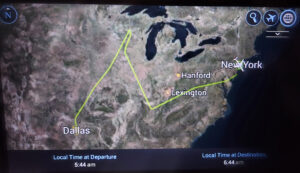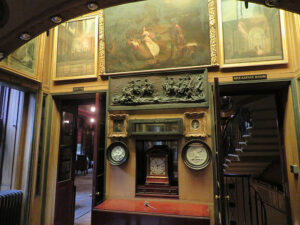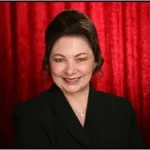By Lita-Luise Chappell. Photography by Vere Chappell.
In May, my husband Vere and I went on a trip to England, and having been there several times, we decided this time to focus on just two counties, Somerset and Yorkshire. Of course, we had to arrive and depart via London, so we spent some time there, too. We had two purposes: The first was to visit a particular abbey in Somerset which is the setting for a new book I am writing and to explore other sites in the county. The second was to do a book signing in Yorkshire, where we would also do a round of visiting ruined abbeys. We were looking forward to time off, and we had purchased an English Heritage membership that would get us into a long list of sites for free.
We would be arriving on Sunday, May 5th, and on Tuesday take a train from Paddington to Bath Spa to pick up our rental car for the week. When booking ahead, we were puzzled when the car rental agency couldn’t book us to pick up a car on Monday the 6th. That’s because it was a bank holiday and the rental agency would be closed. So, we adjusted our plans to stay one more day in London, changing our train tickets, and instead arriving in Bath on Tuesday. Six days later we would return our rental car and take the train back to London, catch another train to York, get another rental car and see the sites there. Then back to London to catch a play before heading home on the 24th.
In describing this trip, I have divided it into three separate weeks of narrative. In so doing, and as usual when we travel, I embark upon historical research throughout our journey. This helps us garner a better understanding of the history of the life once lived at each site, and puts the ruined remains into perspective. The reader will benefit by not only gaining some knowledge of English history, but enjoying the adventure along the way.
The First Week
As lifelong travelers, we know that things don’t always go according to plan. Our late afternoon flight from Orange County to Dallas had to head north and then south to steer clear of major storms over Texas. When we landed we had planned to have dinner in the airport before getting our overseas flight, but all the restaurants closed an hour earlier than anyone expected. We waited on a delayed flight, munched on nuts and watched the rain pour down outside. Finally we boarded, but about three hours into our flight to London as we were heading into Canada, another storm with lightning came so close to the plane that it knocked out the GPS. The pilot explained that he didn’t want to be without GPS over the ocean, so he was instructed to reroute to JFK in New York for a change of planes.
This zigzagging of the flight plan finally brought us to land at 5:30 in the morning. The pilot tried to alleviate our concerns by telling us that there was a plane waiting, fueled and ready to take us on to London.
When we deplaned, we found this was not entirely true. We were first told that the plane would depart at 8:00 a.m., then 9:30, so we took the time to go to a café in the terminal to get some breakfast. When we returned, we still had to wait. Finally, a pilot and eight flight attendants showed up, but they couldn’t get through the gate waiting room door to the plane, as no one had a keycard. An announcer said it would still be a while as the food had to be loaded onto the plane along with our luggage. Because this trip was not a planned flight for the airline, the plane never registered on their website, so there was no link to see when the flight was actually leaving and no way to check if our bags had gotten onboard. All of us passengers just had to operate on trust. A half hour later, someone with a keycard did arrive and the crew got on the plane. We boarded at 10:00, but we had to wait a half hour more before we could depart, as they said they were still loading things onto the plane. Finally, after landing five hours earlier, we departed at 10:30.
After all the delays and fifteen hours of turbulent airplane travel due to all the storms, and with no sleep, we finally arrived in London at 9:00 p.m., when we were supposed to have arrived at 2:30 earlier that Sunday afternoon.
Our original plan was to get a train from the airport to the station nearest to where we would be staying in London, at the Rove Hotel, but we were so tired after that long time of flying that we opted for a taxi directly to the hotel’s door. We arrived and checked in, but when we got into our deluxe king-size room, it was flooded! So they gave us the only other room they had available. However, it was cramped at half the size, with no luggage racks and we had to walk sideways between the TV and the bed to get to the other side of the room. Then, when we opened our suitcases, we found that most of our clothes were wet! The suitcases must have sat on the tarmac in the pouring rain in Dallas for a good long time. So in our small room, we had to drape all our wet clothes over the heating and lighting fixtures, bathroom door, tiny cupboard of a closet, one towel rack, the TV, and one chair. Fortunately, the room was warm, so by morning most things had dried. Between the lightning storm, a bumpy ride with torrential rains, a flooded room, and wet clothes —with more rain expected that night in London—water was proving to be the challenging element.
Undaunted the next morning, we were determined to get a move on our day. When Vere went to fetch some water for us, he found out that the English pounds that we had saved from a previous visit before the pandemic were no longer valid, so we had to exchange them for valid bills at a local bank. The currency change had taken place in 2020. Now their bills are smaller with additional security features: the bills have a see-through window, a hologram that makes them harder to counterfeit, and they are stronger with a polymer fiber running through them.
Our first fun site was the Sherlock Holmes Museum. And yes, it is at 221b Baker Street in Marylebone. There was a short introduction in the home, where we were introduced to the world of Sherlock Holmes given by a guide in Sherlock’s study.
 It showed where Holmes and Doctor Watson would have sat, and any client who had written for an audience and been granted an appointment. Everything was found exactly as described in the stories, though admittedly, I imagined the rooms much larger. There was Watson’s doctor’s bag in his chair, Sherlock’s chemistry set and violin, and even the letters “VR” (for Victoria Regina, the Royal Cypher for the queen) that Sherlock had shot into the wall, as written in one of the stories, and the reason why Mrs. Hudson, his landlady, tripled his rent. The room was otherwise full of Victorian items, including his Persian slippers. Other rooms were Doctor Watson’s, Mrs. Hudson’s, and in others they had staged mannequins of murderers from several books, and one figure of Moriarty. There was, of course, a bookshop with just about every possible item with Sherlock’s profile on it: pipes, books, puzzles, cups, tea towels, key rings, the usual sundry tourist things. Admittedly, we did get a fridge magnet.
It showed where Holmes and Doctor Watson would have sat, and any client who had written for an audience and been granted an appointment. Everything was found exactly as described in the stories, though admittedly, I imagined the rooms much larger. There was Watson’s doctor’s bag in his chair, Sherlock’s chemistry set and violin, and even the letters “VR” (for Victoria Regina, the Royal Cypher for the queen) that Sherlock had shot into the wall, as written in one of the stories, and the reason why Mrs. Hudson, his landlady, tripled his rent. The room was otherwise full of Victorian items, including his Persian slippers. Other rooms were Doctor Watson’s, Mrs. Hudson’s, and in others they had staged mannequins of murderers from several books, and one figure of Moriarty. There was, of course, a bookshop with just about every possible item with Sherlock’s profile on it: pipes, books, puzzles, cups, tea towels, key rings, the usual sundry tourist things. Admittedly, we did get a fridge magnet.
Next was Sir John Soane’s Museum, which is full of his life’s collection of art from all over Europe, especially from Egypt and Greece, including the Seti I sarcophagus.
We had been to his house before, but the place was so impressive, we opted to visit it again. First of all, the house itself is extraordinary with room after room connected by narrow hallways, open balconies, and high stained-glass skylights.
Nooks and crannies and shelves at all heights are filled with antiquities, Greek amphora, hundreds of marble and stone statues attached to every square foot of the walls and ceilings, and period furnishings and his collection of paintings. Soane was an architect and had designed the house, which has been kept exactly the same as when he died in 1837.
One amazing room with all his extra pictures has a moveable wall. That is, inner walls that can move, showing another wall full of more paintings, like you might swing huge rungs of rugs on in a carpet store. There are also the sepulchral chamber, drawing office, and model room. Once again, we took our time to marvel at this one man’s collection, and took special interest in seeing the sarcophagus with the goddess Nuit inside.
The model room also has a model of the Temple of Vesta. Even the guard said that for as long as he has worked there, he still sometimes sees something he had not noticed before.
Then back to the hotel to rest until dinner. We ended up at a restaurant called Bizzarro. We had planned to eat as much British food as we could, but in truth, British food menus tend to be rather limited, and there are more Italian restaurants than British. Vere had the spaghetti carbonara, and I had filet of sole with baby prawns, and spinach with a white sauce.









 The official website of Lita-Luise Chappell, writer on sex, magic, food, distant lands, and everyday life with articles, poetry, novels, travelogues, rituals, cookbooks, and short-stories.
The official website of Lita-Luise Chappell, writer on sex, magic, food, distant lands, and everyday life with articles, poetry, novels, travelogues, rituals, cookbooks, and short-stories.
